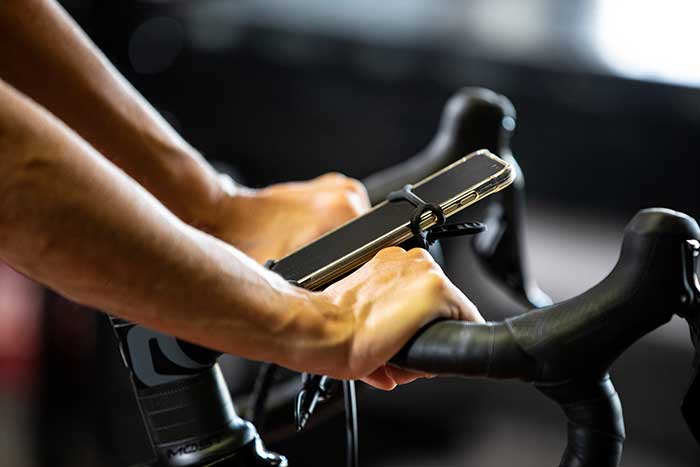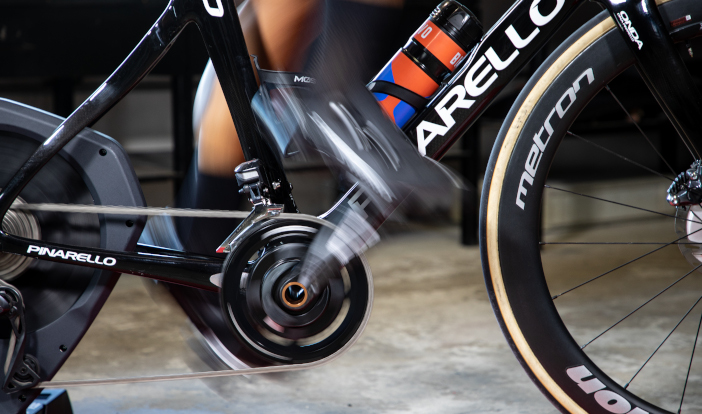Now that we have clarified the “why” of the test we will look at the “what” to measure and with “what instruments”.
Marco Compri, technical coach of the Italian Cycling Federation and head of the training projects at Bikevo, explains us the correct way to train for cycling.
Now that we have clarified the “why” of the test we will look at the “what” to measure and with “what instruments”.
The evaluation of a cyclist should include a series of measurements to at least determine:
a- body mass; this allows us to relate the power data extrapolated from the test to the weight of the subject (w/kg) to make it possible to compare with other cyclists.
b- body composition; this allows us to monitor the quality of the body mass and weight changes during the season
c- values that are meaningful and easily available, without having to resort to expensive laboratory measurements such as oxygen consumption and which consider all the different bioenergy aspects
The test protocols, which will be presented later, have been chosen besides the simplicity of performance because they allow to analyze all the energy mechanisms or:
- underlying anaerobic mechanism (power test - pedal frequency);
- anaerobic- lactic mechanism (winged test 30 ");
- aerobic mechanism (incremental test).
Of the proposed tests we can obtain the maximum power output of the subject tested and indirectly the maximum force at various rpm, the medium power from the 30 second Wingate that defines the lactic acid power, peak power that is obtained from the maximum power output reached in an incremental test and thus the power output that corresponds with the Vo2max and that, according to some studies (Capelli et al. 1977), has a limited time of around 6 minutes with a standard deviation of 1 minute. And, finally, the anaerobic threshold power that corresponds to about 81% of the maximum power output identified by the incremental test carried out until exhaustion. This represents the power at which the “zone” of anaerobic threshold has been identified; at this intensity the activity can be the sustained, in theory, up to an hour.
Putting the different power outputs obtained from the test in relation to one another, it is possible, also in an empirical way, to establish the Critical Power (the maximum quantity of work sustainable through the energy derived from the aerobic mechanism, Morton 1996), at the end of a simple functional evaluation without having to carry out tests to exhaustion (Bragato, 2008).
The classic protocols to determine the critical power require three or more tests that are conducted at various percentages of the Vo2max to determine the amount of time a subject is able to maintain a particular power output constantly. The exhaustion times are then inserted into a graph showing the relationship between power and time. The asymptote of this hyperbola represents the critical power of the individual.
Moreover, by repeating the tests mentioned above in various moments of the season, it is possible to evaluate, from a practical point of view, the development of the Critical Power which is an important indicator of the fitness level of a subject.
The instruments with which these mechanisms can be evaluated are the ergometer (if the tests are carried out indoor) or the power meter (if the test takes place outdoors). Without going into too much details - although it would merit an in-depth discussion of the instruments, the companies that produce them and the technical criteria of construction and functionality - the professional carrying out the tests should know the characteristics of the instrument and the quality of the measurements.
It is especially worth considering their precision, accuracy, and the protocols that need to be used and the possibility to use the bike of the test subject. Regarding power meters that are installed on the bike, you should not just consider their precision and accuracy, but also the ease of transferring them from one bike to another. This is an important aspect when testing a group of persons outdoors.
Besides the ergometer you should have a scale to measure weight and a caliper or an impedance meter to analyze the body mass.

Editorial Board
You might also be interested in


